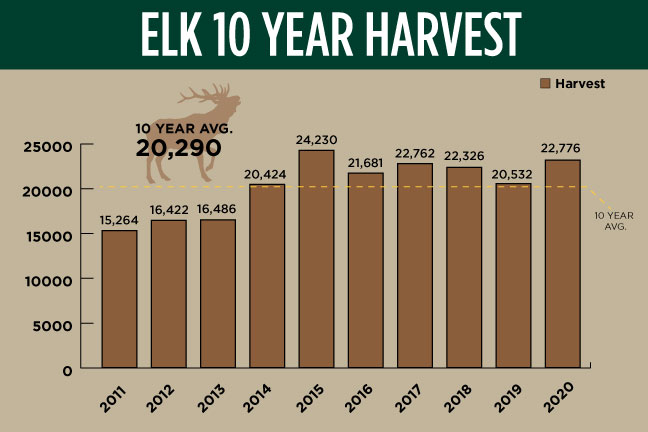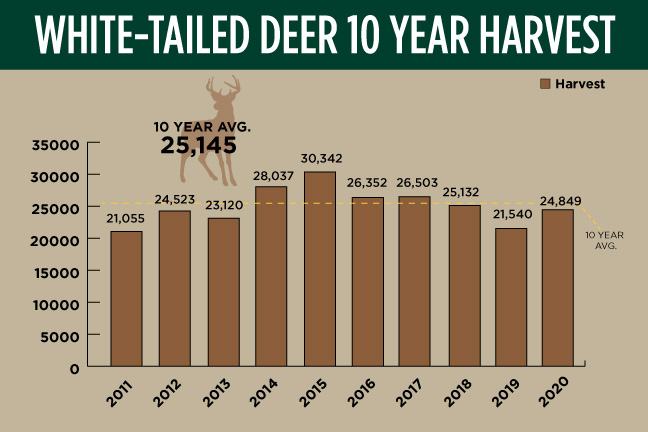Idaho elk and deer hunters had increased harvests in 2020, and elk hunting continues to steam toward all-time highs for consecutive years of harvest above 20,000 animals. White-tailed deer harvest was also historic by topping the mule deer harvest — something that has happened just a few times in Idaho’s history.
The 2020 Idaho elk and deer harvests were up about 10 percent and 11 percent from 2019. After hunter numbers dipped between 2018 and 2019, hunter numbers also bounced back by about 4 percent for deer hunters and nearly 6 percent for elk hunters.
Total elk harvest was up about 12 percent from the 10-year average, whitetail harvest was about even with its 10-year average, and mule deer harvest was down about 11 percent.
Success rates in 2020 were steady for mule deer and elk hunters compared with 2019, while the success rate for whitetail hunters jumped more than 5 percent from 38 to 43.5 percent.
Elk
At a glance
- Total elk harvest: 22,776
- Overall hunter success rate: 23 percent
- Antlered: 11,897
- Antlerless: 10,879
- Taken during general hunts: 15,045 (19 percent success rate)
- Taken during controlled hunts: 7,731 (42 percent success rate)
How it stacks up
Prior to the 2020 hunting season, Fish and Game’s Deer/Elk Program Coordinator Rick Ward said the recent spate of excellent harvests — which he dubbed the second Golden Age of Idaho elk hunting — was likely to continue. Well, it’s safe to say that it did. The 2020 elk harvest in Idaho was sixth-highest of all time, and second-highest in the past decade.
The 2020 elk season marked the seventh straight year that Idaho hunters harvested more than 20,000 animals, and the current stretch of stellar elk harvests is inching closer to claiming the title of “best of all time.”
Dating back to 1935, only one nine-year period ranks higher, which started in 1988 – the first year that Idaho hunters had ever harvested more than 20,000 elk – and ran through the mid-1990s.
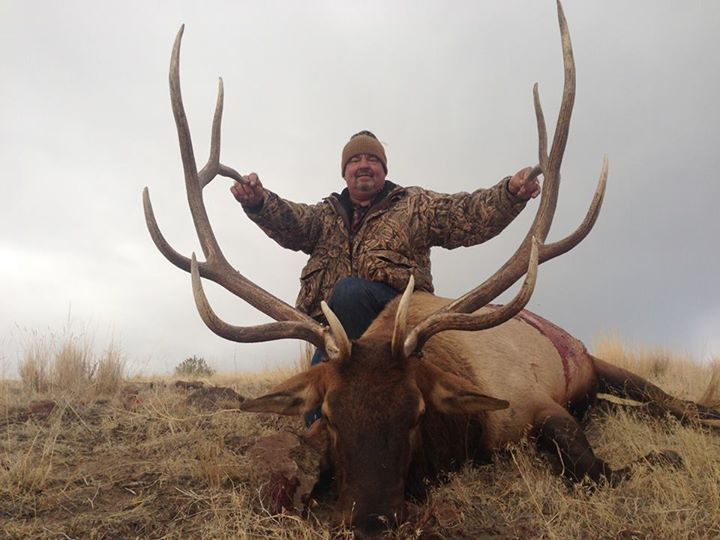
Harvest in 2020 increased over 2019 by 2,244 total elk, or about 11 percent, and was also about 12 percent higher than the 10-year average of 20,290. An uptick in antlerless harvest of 1,783 animals accounted for most of that increase between 2019 and 2020, but bull harvest also increased by 478 animals between the two years.
“A major contributing factor was that we saw hunter success increase for antlerless elk in southern Idaho, where elk numbers are above population objectives,” Ward said. “This is in line with our management goals for those areas. We actually increased antlerless opportunity in a number of hunts in southern Idaho in 2019, but it appears that it took elk hunters in those areas a year to get their bearings, which is where we see these increased success rates for cows in 2020.”
Mule deer
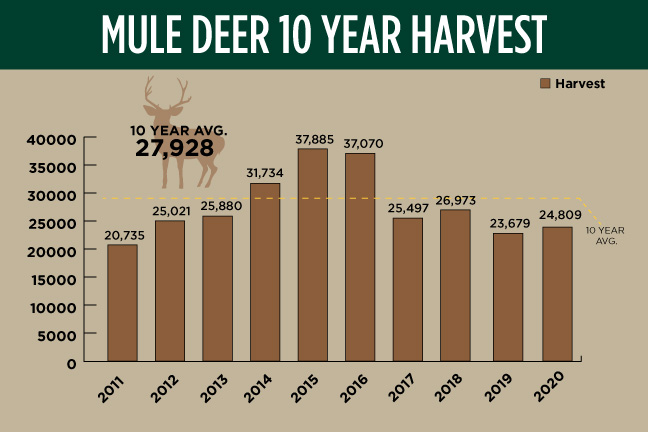
At a glance
- Total mule deer: 24,809
- Overall hunter success rate: 28 percent
- Antlered: 19,425
- Antlerless: 5,383
- Taken during general hunts: 18,613 (25 percent success rate)
- Taken during controlled hunts: 6,196 (51 percent success rate)
How it stacks up
Hunters harvested 1,130 more mule deer in 2020 than in 2019, an increase of 5 percent, but the statewide mule deer harvest was about 11 percent lower than the 10-year average of 27,928 animals, which was expected due to harsh winters in recent years.
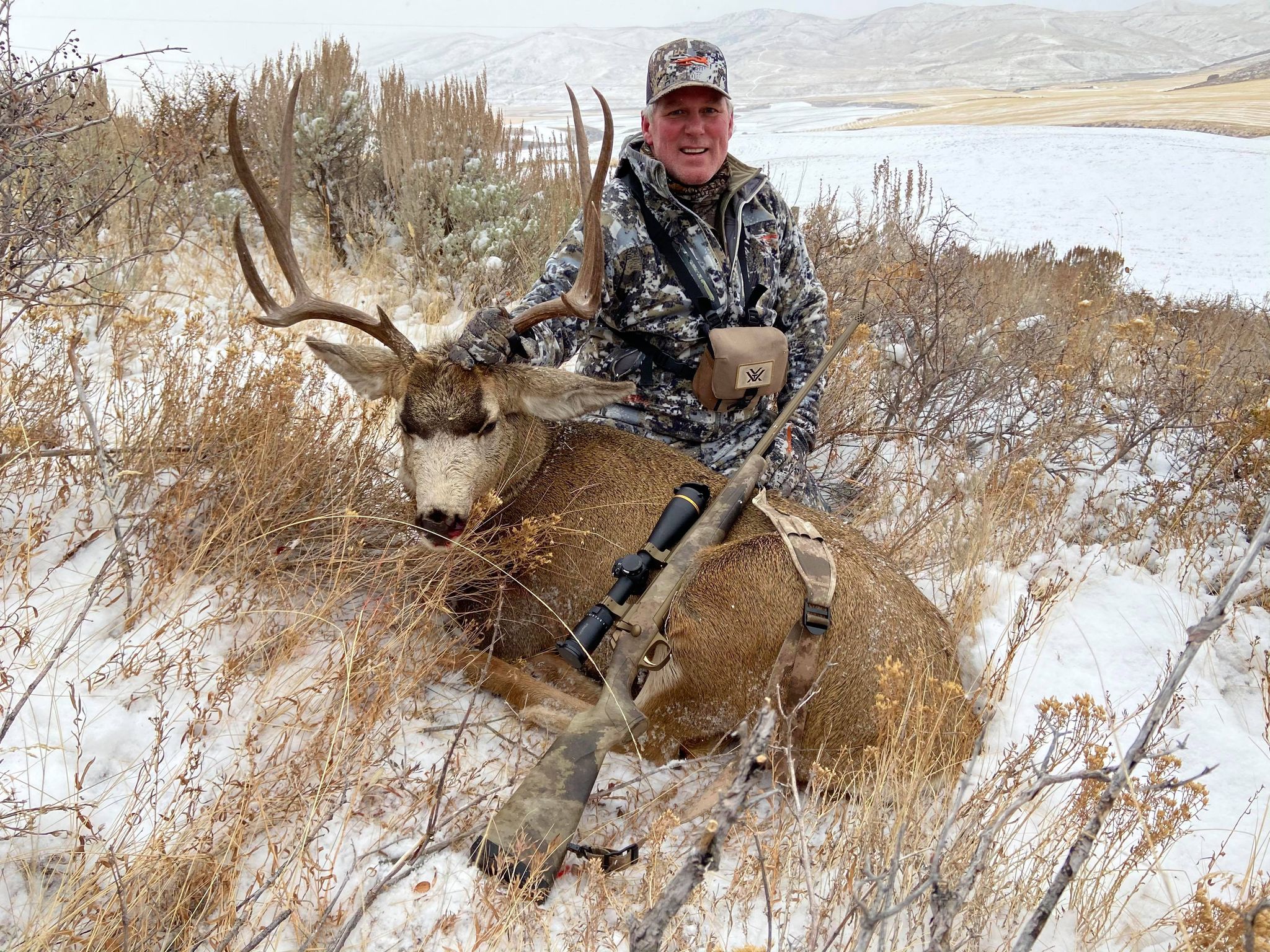
The antlered harvest was 19,425, of which 8,036 were two-point, or yearling bucks. As anticipated by Fish and Game wildlife staff prior to the 2020 season, the statewide harvest benefited from what was an overall mild winter 2019-20. Higher-than-average winter fawn survival carried over into the 2020 fall hunting season, which meant more young bucks in the herds and in the harvest than in 2019, when 1,155 fewer two-points were harvested.
“We still haven’t quite made up for the poor survival we saw in 2016-17 and 2018-19 winters, but the increase we saw in the mule deer harvest during fall hunts is, in large part, a reflection of the above-average fawn survival and a step in the right direction,” Ward said. “If we can string together a couple more winters like the one we had last year, our statewide mule deer population and harvest should continue to rebound.”
White-tailed deer
At a glance
- Total white-tailed deer: 24,849
- Overall hunter success rate: 44 percent
- Antlered: 15,941
- Antlerless: 8,908
- Taken during general hunts: 22,450 (43 percent success rate)
- Taken during controlled hunts: 2,400 (54 percent success rate)
The big news for the 2020 whitetail harvest was a spike in hunter success: Across all hunts, about 44 percent of whitetail hunters filled their tags in 2020, up from 38 percent in 2019. The number of whitetail hunters was also up just slightly in 2020 compared to the prior year, with an additional 1,223 hunters — or a 2.4 percent increase. All of this translated into hunters taking 24,849 whitetails in 2020, which was 15 percent above the 2019 harvest and almost even with the 10-year average of 25,145.

The 2020 whitetail harvest being only “average” in the context of the last 10 years says less about 2020 than it does about the decade of success whitetail hunters have enjoyed. In fact, the all-time harvest record of 30,342 was set in 2015, and seven of the top-10 harvest years for whitetails occurred over the last decade with no sign of waning.
Suffice it to say, whitetail hunting has been really good over this stretch, so much so that those top-10 harvests have become “average.” And it makes sense: Idaho’s whitetails are abundant and resilient, which means there’s a steady population of animals available to hunt, and Fish and Game offers long seasons, generous either-sex hunting opportunities, and sells an unlimited number of resident general season tags.
While 2020 whitetail harvest was up by about 15 percent over 2019, biologists said that’s likely due to normal variation in annual harvests rather than a larger whitetail population. They point out that weather during hunting season can account for 10-to-20 percent swings in the harvest from year to year.
The percentage of five-point (and larger) bucks in the 2020 harvest (14 percent) was nearly identical to 2019.

